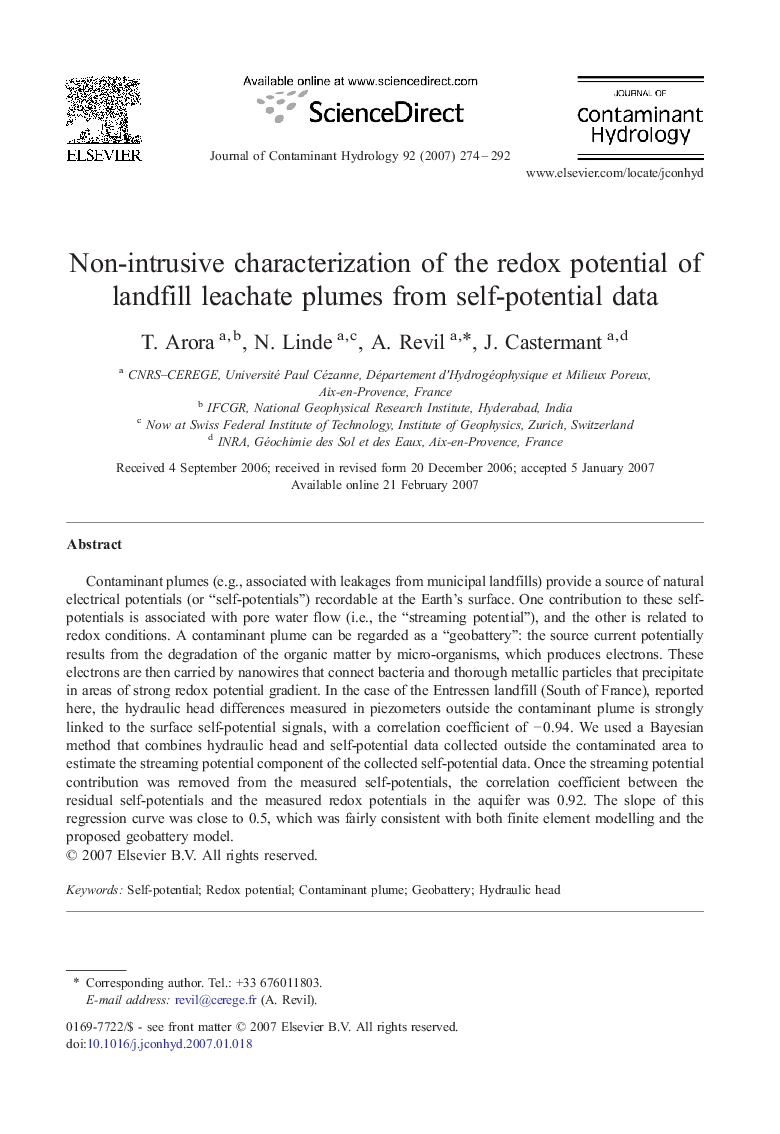| Article ID | Journal | Published Year | Pages | File Type |
|---|---|---|---|---|
| 4547513 | Journal of Contaminant Hydrology | 2007 | 19 Pages |
Contaminant plumes (e.g., associated with leakages from municipal landfills) provide a source of natural electrical potentials (or “self-potentials”) recordable at the Earth's surface. One contribution to these self-potentials is associated with pore water flow (i.e., the “streaming potential”), and the other is related to redox conditions. A contaminant plume can be regarded as a “geobattery”: the source current potentially results from the degradation of the organic matter by micro-organisms, which produces electrons. These electrons are then carried by nanowires that connect bacteria and thorough metallic particles that precipitate in areas of strong redox potential gradient. In the case of the Entressen landfill (South of France), reported here, the hydraulic head differences measured in piezometers outside the contaminant plume is strongly linked to the surface self-potential signals, with a correlation coefficient of − 0.94. We used a Bayesian method that combines hydraulic head and self-potential data collected outside the contaminated area to estimate the streaming potential component of the collected self-potential data. Once the streaming potential contribution was removed from the measured self-potentials, the correlation coefficient between the residual self-potentials and the measured redox potentials in the aquifer was 0.92. The slope of this regression curve was close to 0.5, which was fairly consistent with both finite element modelling and the proposed geobattery model.
